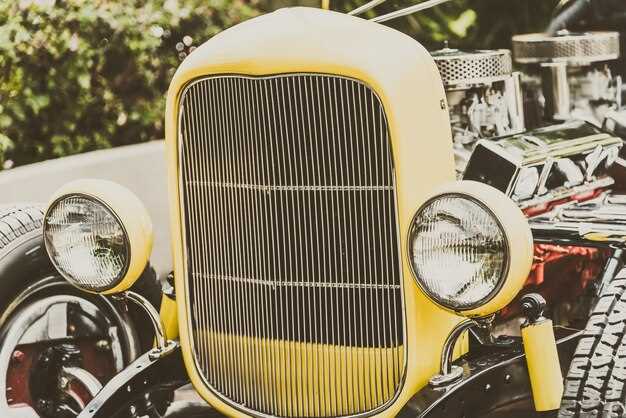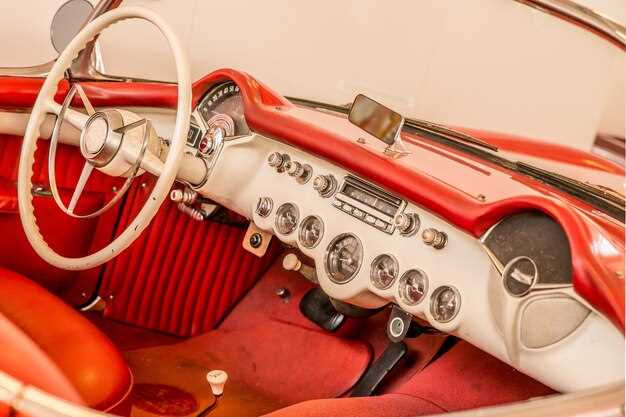
For automotive enthusiasts and collectors, vintage cars hold a special place not only as transportation but as tangible pieces of history. Owning a classic vehicle often comes with the challenge of finding rare parts that are essential for restoration and maintenance. The process can be daunting, but with the right strategies and resources, sourcing these elusive components can become a more manageable task.
In this article, we explore the various methods and platforms available for locating hard-to-find parts for vintage automobiles. Whether you’re seeking original manufacturer components or aftermarket alternatives, knowing where to look and how to navigate the market is crucial. Utilizing online resources, attending specialty shows, and connecting with fellow enthusiasts can significantly ease the burden of restoration projects.
Equipped with the right knowledge and tools, anyone can embark on the journey of restoring a vintage car to its former glory. From identifying reputable suppliers to leveraging online forums and social media groups, this guide aims to empower you with practical tips and insights that will simplify the sourcing process. Your dream car is closer than you think, and with a little perseverance, you can find the parts that will bring it back to life.
Identifying Trusted Suppliers for Hard-to-Find Components
Finding reliable suppliers for hard-to-find components is a critical step in restoring vintage cars. The quality of the parts used can significantly impact both performance and authenticity. Here are several strategies to identify trusted suppliers:
- Research Online:
- Utilize online forums and communities dedicated to vintage car enthusiasts.
- Check reviews and ratings on platforms like Google, Yelp, or specialized vintage car websites.
- Attend Car Shows and Swap Meets:
- Network with other collectors and restorers who can recommend suppliers.
- Visit booths specializing in vintage parts to evaluate their offerings and expertise.
- Contact Enthusiast Clubs:
- Join clubs specific to your car model; members often have insider knowledge of reliable suppliers.
- Request information on recommended vendors from club newsletters or meetings.
- Evaluate Supplier Experience:
- Check how long the supplier has been in the business of vintage parts.
- Assess their knowledge about specific models and components.
- Request Samples or Specifications:
- Ask for samples of parts to evaluate quality before making a larger investment.
- Inquire about specifications to ensure compatibility with your vehicle.
- Verify Customer Service:
- Assess their responsiveness to inquiries and willingness to provide support.
- Evaluate return policies and warranty options for parts purchased.
By utilizing these strategies, vintage car enthusiasts can confidently identify trusted suppliers and ensure that they source quality hard-to-find components for their restoration projects.
Utilizing Online Marketplaces and Forums for Vintage Car Parts

In today’s digital age, sourcing rare parts for vintage cars has become significantly easier due to the rise of online marketplaces and forums. These platforms not only provide access to a vast range of parts but also connect enthusiasts and collectors from around the globe.
Online Marketplaces such as eBay, Amazon, and specialized sites like Hemmings offer a wide selection of vintage car components. Users can search for specific parts by using filters like make, model, and year, which helps in narrowing down the search efficiently. Sellers range from individual hobbyists to major dealerships, ensuring a variety of options and price points. Buyers should carefully check seller ratings and reviews to ensure that they are purchasing from reputable sources.
Forums, on the other hand, provide a community-oriented approach to sourcing parts. Websites dedicated to vintage cars, such as The Vintage Forum or Classiccarrestorationclub.com, often have dedicated sections where members can buy, sell, or trade parts. Engaging in these forums allows users to tap into a wealth of knowledge from experienced restorers and collectors who might have leads on rare components or even offer parts directly.
Another advantage of forums is the ability to participate in discussions about specific parts or restoration techniques. Members often share tips on where to find hard-to-locate items or provide insights about suitable alternatives. This collaborative environment not only enhances the experience of sourcing parts but also builds a sense of camaraderie among vintage car enthusiasts.
Additionally, social media platforms, particularly Facebook groups, have emerged as valuable resources for sourcing vintage car parts. Joining dedicated groups can offer instant access to listings, as well as direct communication with other members who may have parts available. It’s an effective way to stay updated on trends and swap information quickly.
In conclusion, utilizing online marketplaces and forums is essential for sourcing rare parts for vintage cars. By leveraging these tools, enthusiasts can enhance their chances of finding the necessary components while also building connections within the community, ultimately enriching their restoration experience.
Restoration Tips for Integrating Sourced Parts into Your Vehicle

When restoring a vintage car, integrating sourced parts is a crucial step that requires careful planning and execution. Start by thoroughly assessing each sourced part to ensure compatibility with your vehicle. Measure dimensions and check the specifications against your car’s model to avoid mismatches during installation.
Next, clean and prepare each part before installation. This includes removing any rust, dirt, or old paint. Use appropriate cleaning agents that won’t damage the part, and ensure all surfaces are properly dried. This preparation helps improve adhesion and overall appearance once the part is installed.
During installation, follow a systematic approach. Start by dismantling the necessary components of your vehicle, ensuring that you document the process with pictures or notes. This documentation will serve as a valuable reference when reassembling. Use the correct tools for each part, as improper tools can damage both the car and the sourced part.
If any modifications are necessary to fit the sourced parts, proceed with caution. Use techniques such as sanding or cutting minimally and only when absolutely required. Always prioritize preserving the originality of the vehicle while ensuring the parts fit perfectly.
After integration, perform a functional test to ensure everything operates as intended. Check alignments, connections, and overall functionality to confirm the successful installation of the sourced parts. Finally, consider applying a protective finish or coat to the sourced parts to enhance durability and to match the aesthetic of your vintage car.

